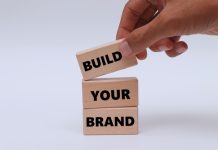Jewelry is generally sold as an emotional purchase to mark life’s milestones such as birthdays or anniversaries. Most jewelers’ advertising evokes an emotional pitch, with De Beers’ “A Diamond Is Forever” campaign, for example, based solely on a diamond’s emotional appeal.
What happens when jewelers stray from “emotional” advertising? They often end up with results such as those of Zale Corp., which experienced a drop in sales and a quarterly loss for the three-month period ended January 2009.
The November-January selling period is crucial for jewelers and an inability to increase sales and generate profits during that time typically makes for a bleak year.
Neal Goldberg, Zale’s chief executive officer, acknowledged that the company strayed from its core message when it abandoned its original holiday marketing strategy—which was to emphasize emotion and item-specific promotions—and instead chose to emphasize storewide discounts and urgent calls to action. This last-minute shift before Christmas cost Zale dearly.
Goldberg and his team say they’ve learned their lesson: It’s back to basics and a return to an emotional advertising message.
“The emotional part of [our advertising] is still right on [target],” Goldberg said, adding that Zale gets a much better response from its emotional advertising message as compared to its storewide sale strategy.
Not only were sales weak during the quarter ended January (total sales fell about 18 percent), but the company’s gross margin fell by 530 basis points to 44 percent from the prior year’s 49.3 percent, a drop that Cindy Gordon, Zale’s interim chief financial officer, blamed on “an aggressive promotional stance over the holiday.”
Extremely weak sales also drove up the company’s operating cost ratio, since overhead costs were inefficiently absorbed.
There was one other interesting financial metric that fell out of the holiday selling period: The average ticket was about flat with last year, but the number of transactions fell in line with the sales decline.
What this says is very important: Consumers who planned to buy jewelry had a set budget in mind. They would have spent that much, even if Zale had not engaged in such heavy discounts. In short, price discounting hurt Zale’s gross margins and total sales.
Zale’s lesson for jewelers: Cutting prices is a very dangerous game.
Who else is focusing on the all-important emotional appeal of jewelry? De Beers dumped millions into advertising during the 2008 holiday selling season, and none of it mentioned “discounted diamonds” or “deal of the day.”
In a recent issue of Vogue, Tiffany’s two-page spread included this copy only: “Hold on to those fleeting moments that matter most. An important anniversary, a proud accomplishment, a new arrival. A Tiffany Celebration Ring captures your feelings, for all time.”
Zale returns to original strategy
Immediately after its disappointing Christmas selling season, Zale returned to its original strategy–an emotional appeal and specific-item promotion. What has been the result?
• The company’s gross margin has returned to about 50 percent, up from the holiday period’s very weak 44 percent.
• Same-store sales have improved notably, though they are still running negative, with increases only in the Piercing Pagoda (kiosk) division.
• The average transaction value has risen.
We continue to believe that Zale has implemented a strategy that will be successful over the longer term, despite a very tough economic environment.
Goldberg summarized elements of his team’s strategic plans, including three objectives:
• Focusing on Zale’s value-oriented customer with a price-appropriate assortment of merchandise.
• Increasing operational efficiency throughout its supply chain and stores.
• Aggressively managing cash and capital expenditures.
After implementing a cost-reduction plan in early 2008 that identified $175 million in inventory and cost cuts, the company has entered the second phase of the plan, with $140 million of additional inventory and cost reductions, including:
• The closing of about 115 underperforming stores (mostly Zales and Gordons Jewelers, but almost no Zale Outlet units), which saves about $34 million.
• About $21 million saved from company-wide staff reductions, including 170 staffers representing 245 positions (the balance of positions were unfilled).
• About $10 million in savings through store-level and in-store efficiencies.
• An additional $75 million in inventory reductions through improved inventory management.
• Zale’s capital expenditures will be about $30 million in the new fiscal year, 65 percent less than the prior year.
• Since the beginning of 2008, Zale has reduced its vendor base by two-thirds, is seeking further vendor efficiencies and plans to create stronger relationships with remaining vendors.
• Zale’s replenishment system will run on a “real-time” basis in order to boost supply-chain efficiency.
• Regional directors will now be required to live in the markets that they supervise in order to build local market expertise, increase training efficiency and improve communications.
• Zale will still sell clearance goods, but in order to boost gross margins, such goods will represent a smaller portion of total sales.
• New goods—many exclusive to Zale—have been generating a gross margin of 500 to 700 basis points higher than the company average, including during the holiday selling season. Clearly, customers want something new and different.
• Zale’s revamped “pacesetter” stores continue to perform above average, both in terms of sales levels and margins, management says.
• Zale is aggressively challenging its rents, especially as leases renew, and is also renegotiating existing leases.
• Like most retailers, Zale underwent a re-valuation of its inventory during and after the holiday period. During the holiday selling season, the per-store inventory was lower, inventory turn was up and total inventories fell 11 percent from last year.
Editor’s note: This story first appeared on IDEXOnline.com on March 8, 2009.
Source: National Jeweler
Zale’s Jewelry: Price Nice, But Emotion Works Better
Get our newsletter and digital focus reports

Stay current on learning and development trends, best practices, research, new products and technologies, case studies and much more.

